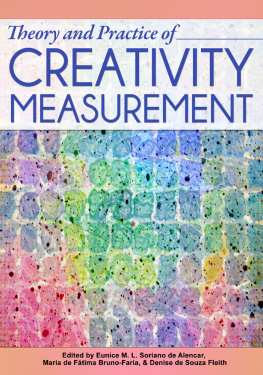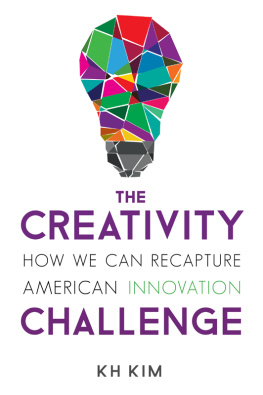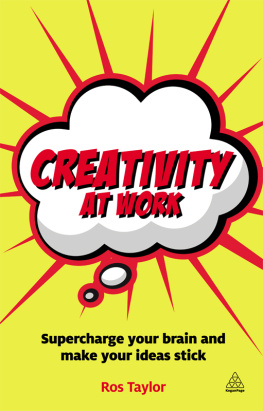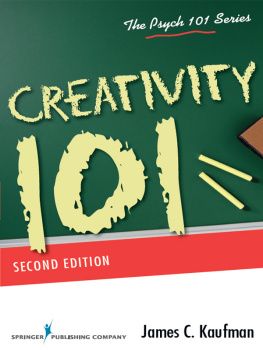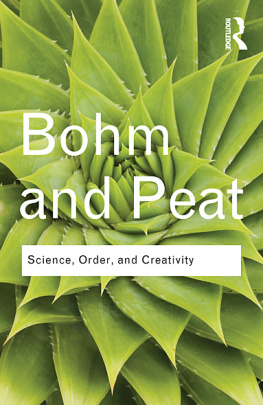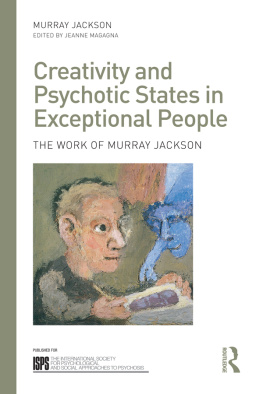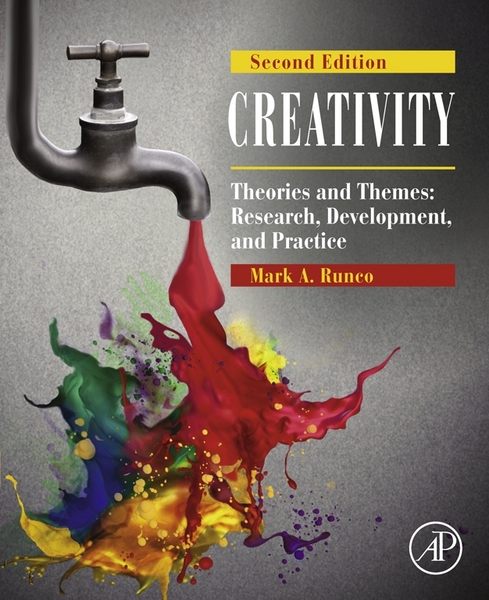Mark A. Runco
Abstract
This chapter discusses various aspects of cognition and creativity. Cognitive theories focus on thinking skills and intellectual processes. The approaches to creative cognition are extremely varied. There are bridges between basic cognitive processes and creative problem solving, as well as connections with intelligence, problem solving, language, and other indications of individual differences. The basic processes are generally nomothetic, meaning that they represent universals. Divergent thinking is employed when an individual is faced with an open-ended task. From this perspective divergent thinking is a kind of problem solving. Divergent thinking is not synonymous with creative thinking, but it does tell something about the cognitive processes that may lead to original ideas and solutions. Many theories of creative cognition look to associative processes. Associative theories focus on how ideas are generated and chained together. Cognitive theories of creativity often focus specifically on the problem-solving process. A problem can be defined as a situation with a goal and an obstacle. The stage models of creative cognition are also elaborated.
Keywords
Threshold theory
IQ
Structure of intellect
Associative theory
Problem solving
Problem finding
Incubation
Insight
Intuition
Meta-cognition
Mindfulness
Overinclusive thinking
You can only perceive beauty with a serene mind. Henry David Thoreau
Trouble with you is the trouble with me. Got two good eyes but still dont see. Grateful Dead
Advance Organizer
Universals and Individual Differences
Intelligence, IQ, and Threshold Theory
Structure of Intellect and Associative Theory
Creative Thinking as Problem Solving
Problem Finding
Stage Theories of the Creative Process
Insight
Componential Models
Incubation and the Role of the Unconscious
Logic
Intuition
Tactics and Metacognition
Mindfulness
Overinclusive Thinking
Introduction
Cognitive theories focus on thinking skills and intellectual processes. Cognitive perspectives are quite numerous; there may be more cognitive theories of creativity than any other kind of theory. This is because there is an intuitive connection between cognition and creativity (and evidence reviewed in this chapter suggests that intuition is a useful source of information), and because cognitive research is often very scientific. In other words, we can study the cognitive bases for creative problem solving, and we can often do so in reasonably valid and reliable ways, in a controlled laboratory setting or with paper-and-pencil tests. Some approaches to creativity do not allow such experimentation and rigorous research. No doubt the prevalence of cognitive research on creativity also reflects the fact that virtually all human behavior has a cognitive basis. Creative behavior must also have a basis in cognition.
The approaches to creative cognition are extremely varied. There are bridges between basic cognitive processes (e.g., attention, perception, memory, information processing) and creative problem solving, as well as connections with intelligence, problem solving, language, and other numerous individual differences. The basic cognitive processes are generally nomothetic, meaning that they represent universals. These are things shared by all humans. Individual differences represent the dimensions along which people vary. There are both cognitive universals and cognitive individual differences in creativity.
This chapter presents an overview of the available theories of creative cognition. We will begin by examining the relationship between creativity and traditional intelligence and then explore the possibility that creativity can sometimes be a kind of problem solving. We will also review research on the creativity of computers, incubation, insight, and expertise. As we will see, cognition is related to many kinds of creative behavior.
Universals
Research on universals is sometimes described as nomothetic, but care should be taken when using this term. The word nomothetic is used to describe the kinds of laws that are found in a legal system, not laws in the sense that science defines them. Laws in the sciences refer to general rules, so there is a parallel, but it is only a parallel. Strictly speaking, it may be best to discuss universals in creativity and avoid the term nomothetic. Similar confusion arises with the complementary term idiographic. An ideograph is a symbol, but idiographic has been used to describe the scientific emphasis on individual differences. This makes sense if you think about the more common term, idiosyncratic. The confusion here, then, is simply spelling (idiographic vs. ideographic). It certainly is useful to distinguish universals from individual differences.
Creativity and Intelligence
The relationship between IQ and creative potential was quite the controversy 50 years ago. In fact, the relationship of intelligence and creativity was the key question when the study of creativity was establishing itself. This question was key because the field of creativity needed to separate itself from other scientific topics and interests in the 1950s and 1960s, and this required empirical evidence that creativity was not the same thing as intelligence. It was the demonstrated separation of creativity from traditional intelligence that first gave this field its identity and respect.
Some of the earliest research on creativity was designed to test the possibility that creativity was distinct from intelligence. After all, if creativity was dependent on intelligence there would be little reason to study or encourage it. Intelligence could be studied or encouraged and creativity would follow along. But sure enough, the early research confirmed that creativity (in the research, defined in terms of divergent thinking or some paper-and-pencil measures) was not dependent on traditional intelligence.
The field of creative studies had a shaky start. potential. Simplifying some, the measures of creative potential and the indicators of traditional intelligence were correlated. This does not support the conclusion of independence.
were too diverse and tapped noncreative skills as well as creative talents. Significantly, they also suggested that creativity can easily be stifled in an educational or testing environment. With this in mind, they conducted their own investigation of the Modes of Thinking in Young Children (the title of their book). This investigation relied heavily on tests of divergent thinking. As described in detail later, these contain open-ended tasks (e.g., List multiple uses for a broom), and an individual can therefore produce original answers.
) is independent of divergent and original thinking.
Box 1.1
Tests of Convergent and Divergent Thinking
Convergent thinking questions always have one (or very few) correct or conventional answers. Here are examples:
Who was the first President of the United States?
How far is it from New York City to London?
How many dimes are in one dollar?


